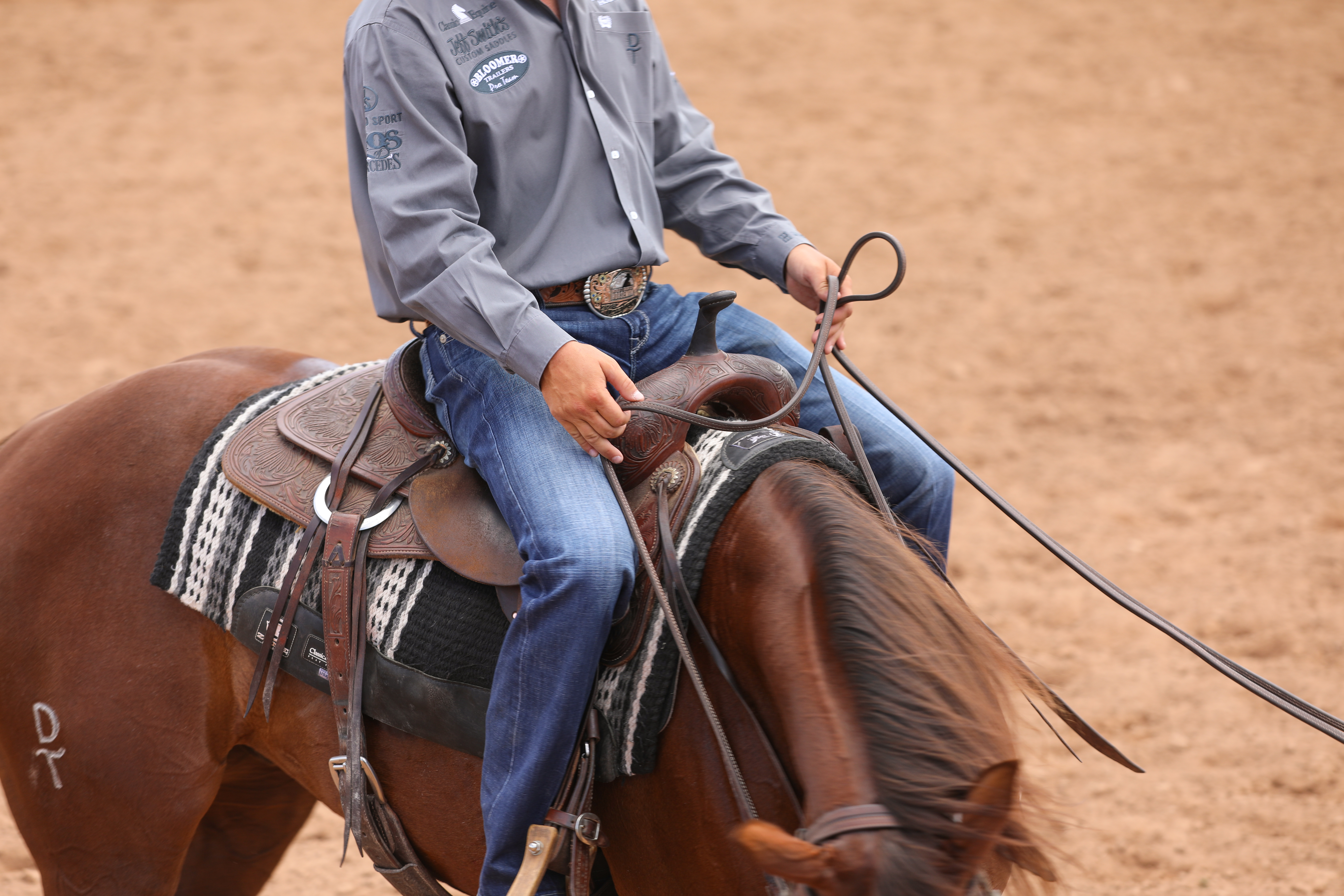Snaffle bits—whether you’re riding for fun or going down the fence in the National Reined Cow Horse Association—can be a critical part of your program. I ride our horses in a snaffle from the time they’re started when they’re 2 until they’re 5, and the main focus is keeping them soft, with the bridle connected to their feet. Snaffle bits are meant to be pulled on, but they’re hard to keep a horse back off of unless used correctly.
[READ: Snaffle Bit Smart]
Here, I’ll break down some critical snaffle-bit skills, and I’ll caution you about some pitfalls riders can face when using the snaffle incorrectly.
One
As soon as you’re on your horse walking around, make sure your body and your hands are soft. If you’re stiff or already tense on the bridle’s reins, through your body, or in your stirrups, your horse will feel that and respond the same way. Keep your hands higher than your swells, but the width of your horse’s shoulders, out in front of the saddle. You want your hips in front of your shoulders, because you’re driving from your hips and you want your horse doing the same. Leaning up over your horse will send your feet behind you, which will put you off balance and make it harder to stay in time with your horse.

Two
I like to start by walking some small circles to see how my horse is listening to my cues. Are his feet connected to the bit? If he’s bowing his ribcage out or leaning his shoulder in, or if his hips are flinging out, he’s not listening properly. If you feel that, spend more time walking and trotting in small circles. If he’s drifting out with his ribs, use your feet and hands to put him back in the circle, keeping him between your feet and hands. If my horse is leaning on the rein, I’ll use my leg to get him off of it and push him straight.

Three
You want to see what your horse’s mind-set is during these circles. You can tell right off by walking him around if he’ll be a little fast and in a hurry. You want to keep him right there until you feel him relax and follow your cues. You want him to stay at that nice, steady walk. You don’t want him to trot and let his mind go too fast. If he’s speeding up, pick him up with your hands back toward your hips slightly, and hold your feet close to your horse, holding him between them.

Four
Your body and your feet are just as important as your hands. Your feet are what gets your horse soft. Your hands release, but your feet drive him up to his face and release. Your horse is like an accordion. You mash it together, it’s all bunched up. You want to drive everything to his face, using your legs. Some horses are more sensitive, so you can’t use your spurs as much. But I always want to be able to put my spurs on them. I use my feet a lot more than some other people, so it’s really important to me to use my spurs—not as a weapon, but something to teach them with.

Five
You want to keep your hands alive when using a snaffle. What I mean by that is that you’ll see people with a snaffle always hanging on their horse’s mouths. If you just hang on your horse, he’s never getting that release he needs to understand what you’re asking. That makes for a pushy, resistant horse. Keeping your hands alive means moving them left and right—not big moves, but subtle, light moves—instead of just hanging and pulling. It’s little movements that work the bit across the tongue and on the sides of his mouths. You can’t out-pull a horse, so you’ve got to figure out how to keep him connected to your hands.
[READ: Does He Hate His Bit?]

Six
There’s a fine line with a snaffle, and you’ve got to be careful not to allow your horse to get behind one—or any bridle—where his feet aren’t connected to his face. When your horse is behind the bridle, it’s dangerous because you might need to pull to stop or turn, but your horse will just bring his nose into his chest or shoulder, rather than backing off and respecting you. He’s got to have a stop point in their face. If I pull and his head goes straight to his chest, my horse can’t turn with the cow. There’s got to be a spot where that pull gets to a certain spot that he has to be connected and stop with his feet. If he puts his head on his chest and keeps running, that won’t be a very good situation most of the time.







